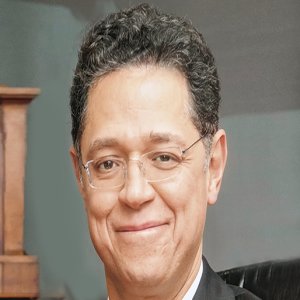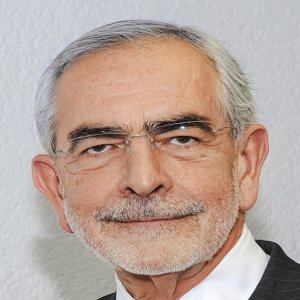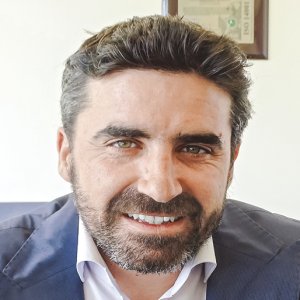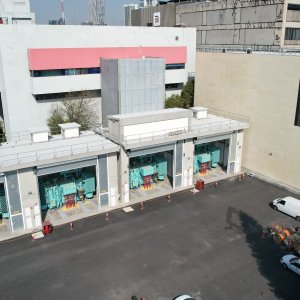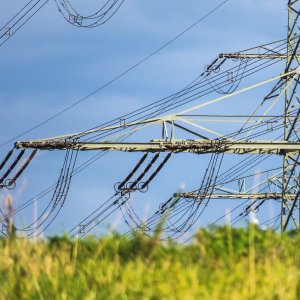Mexican Innovators Help Control Energy Usage

Mexican Innovators Help Control Energy Usage

STORY INLINE POST
Q: What is behind Energetika’s success and how does the company differ from its competitors?
RC: The main factors that set Energetika apart from other energy efficiency consultants are innovation and creativity. We are always looking for cutting-edge technologies and ideas to integrate into our activities. The company stays updated on the technological trends that are shaping the sector internationally, such as the IoT, smart cities or smart sensors. We analyze if a technology or process makes sense for Mexico and adapt it to the local market.
AC: We are always looking for specific products and technologies to provide particular solutions. This strategy allows us to provide a completely tailor-made service that is specifically adapted to our clients and the industries they work in. Our flagship product is the “Energy Intelligence” tool, which helps us improve our customer’s energy usage while gathering additional, useful information. We believe this approach has contributed enormously to Energetika’s success. We integrate IoT into our offer to provide better energy solutions for our customers. The best service you can give to clients is an integrated system that can meet their present and future energy requirements.
Q: Why did you make energy efficiency your core business and what areas of opportunity have you identified?
RC: In the early stages we also were focusing on renewable energy development, including solar and wind technologies. But we quickly realized the biggest opportunity for our company was to improve energy usage for large-scale users, which tend to be highly inefficient in Mexico. Energy efficiency has proven to be more economically attractive than renewables because it can diminish energy-related costs and emissions with a lower initial investment. We chose to keep our renewables division for specific cases, such as projects from the public sector or residential customers under the DAC scheme.
AC: We believe that energy efficiency must be the first step for every company looking to make its energy usage more sustainable. Saving 1MW will always be more effective than producing it, even if it comes from renewable sources.
Once a company has minimized its energy consumption, it can start thinking about producing or buying energy. We favor this strategy because it helps companies pay only for what they need, avoiding long-term contracts for energy that may not be used.
Q: How has the industry responded to the mandatory CO2 emissions inventory that was included in the Climate Change Law?
RC: We started a consultancy division for CO2 emissions accounting in 2015 but we have not seen much interest from industrial customers in this area, despite it being mandatory. The regulations state that all companies must declare their CO2 emissions to SEMARNAT to create the National Emissions Registry. Even though we have promoted the service among our clients the low penalties discourage companies from investing in it.
AC: We use the carbon emissions accounting service as a complement to our energy efficiency studies, promoting it as a marketing tool to position a company’s sustainable agenda. We followed this strategy due to the lack of interest among companies to calculate their emissions if it comes with a cost.
Q: What are the main challenges faced by your industrial clients?
RC: One of the main challenges is the clients’ lack of awareness about the ways in which energy is consumed in their facilities. Most customers are aware of their total energy usage but they do not know where the highest consumption points are. Our Energy Intelligence solution is focused on measuring and analyzing a company’s usage to identify those highest points, facilitating the decisionmaking process.
AC: Generally, large-scale companies face bigger energy challenges. For instance, FEMSA has 138 distribution centers, which makes it more complicated to control the energy usage of each location. The only way to ensure a correct energy management system is by using an integrated solution such as Energy Intelligence, which allows users to identify and monitor the consumption of each point regardless of geographical location. This characteristic is one of the biggest advantages the IoT provides and not many companies integrate this type of technology in the solutions they offer. Our company also has a wide range of after sales services at an affordable price, including maintenance, which contributes to the energy savings achieved by our clients.
Q: What are the main features of Energy Intelligence and why is the IoT important for energy-related services?
AC: Energy Intelligence represents a new and smarter way of approaching energy efficiency. It consists of taking operational technology such as LEDs or sensors, and combining it with information technology, which corresponds to a software platform. We use different platforms from several clients but we also are building our own technology that will have the ability to read a client’s platforms and make smart decisions. We are using analog devices in this system to get a more in-depth view of other factors involved in energy management, such as usage or market behavior. All this information enables our clients to use energy exactly when and how they need it, bringing energy savings of up to 95 percent, which is way more than what our competitors can achieve.
RC: The Energy Intelligence concept can be applied in all sectors where energy is utilized. We have three core business areas: retail, buildings and smart cities. We are using the power of the internet and data science to improve energy efficiency, while gathering information that might be useful for other decision-making processes. For instance, in the building sector data from Energy Intelligence provides customers with the tools needed to make decisions related to the building’s occupancy density or to track assets. In the retail sector, we can help our customers optimize their energy consumption levels while gathering useful marketing information such as people’s itinerary and time spent at the store.
Q: What were the main achievements of the project Energetika developed with the Chalco municipality in the State of Mexico?
RC: In this project we replaced 13,000 regular lamps with LED lamps making it the largest project of this kind in Mexico that has been done by the book. Following the guidelines provided by the government was important because it allowed the municipality to obtain financing from BANOBRAS and the CONUEE, which provided over US$ 444.000 for the project.
AC: Public projects are especially complicated because they require extensive follow-up, which is the main reason discouraging other companies from participating.
Q: How is the project that Energetika is developing to improve the lighting of Mexico City’s subway advancing?
AC: Mexico City’s subway serves 8.5 million users per day, making it one of the world’s busiest systems. Our solution will allow the government to improve the Metro’s energy usage while providing additional tools to make decisions over its operation, optimizing the service. We have already implemented the project in one Metro station and we have plans to do four more. If the project is successful and the government sees the value in it, we expect to install our system across the entire subway network.
Q: How do you foresee an energy-efficiency culture evolving in Mexico?
RC: When we started the company six years ago, we made a great effort to raise awareness about energy efficiency in the industry. However, the enactment of new regulations and the opening of the electricity market have contributed enormously to increasing knowledge among Mexican industries. The fact that industrial and commercial electricity tariffs are higher in Mexico than in other markets has served as an incentive to invest in energy efficiency. Now, most companies understand the importance of energy monitoring and controlling and are aware of the efficient technologies available in the market. But more work is needed to promote this among other population segments, particularly low-income markets which are usually not interested in saving energy. These users receive higher subsidies because their energy consumption is below the established threshold.
Q: What is Energetika’s strategy to continue expanding its business?
RC: We signed a project with FEMSA to install Energy Intelligence in its facilities in Argentina, Brazil and the Philippines and we are about to close a project with a large steel manufacturer, as well as new projects with other municipalities, such as Tuxpan, Veracruz and Tonala, Jalisco.
AC: We want to position ourselves as the best energy efficiency solutions provider through cost-effective energy-saving solutions. The company is trying to reformulate the way energy is used in different sectors, drawing inspiration from international practices that we then adapt to the national landscape. By incorporating creativity and innovation into our daily activities, we are adding extra value to the market.
